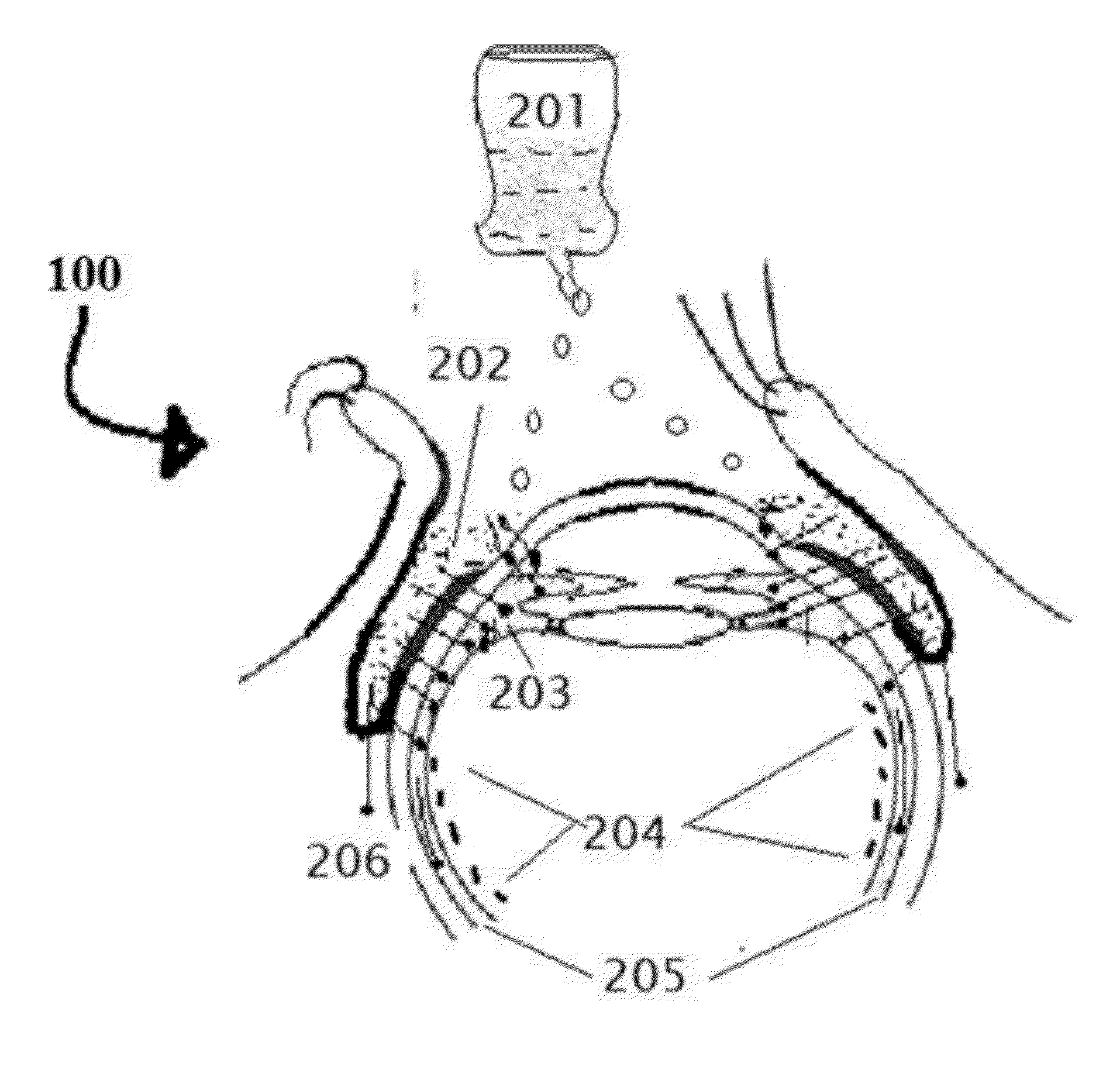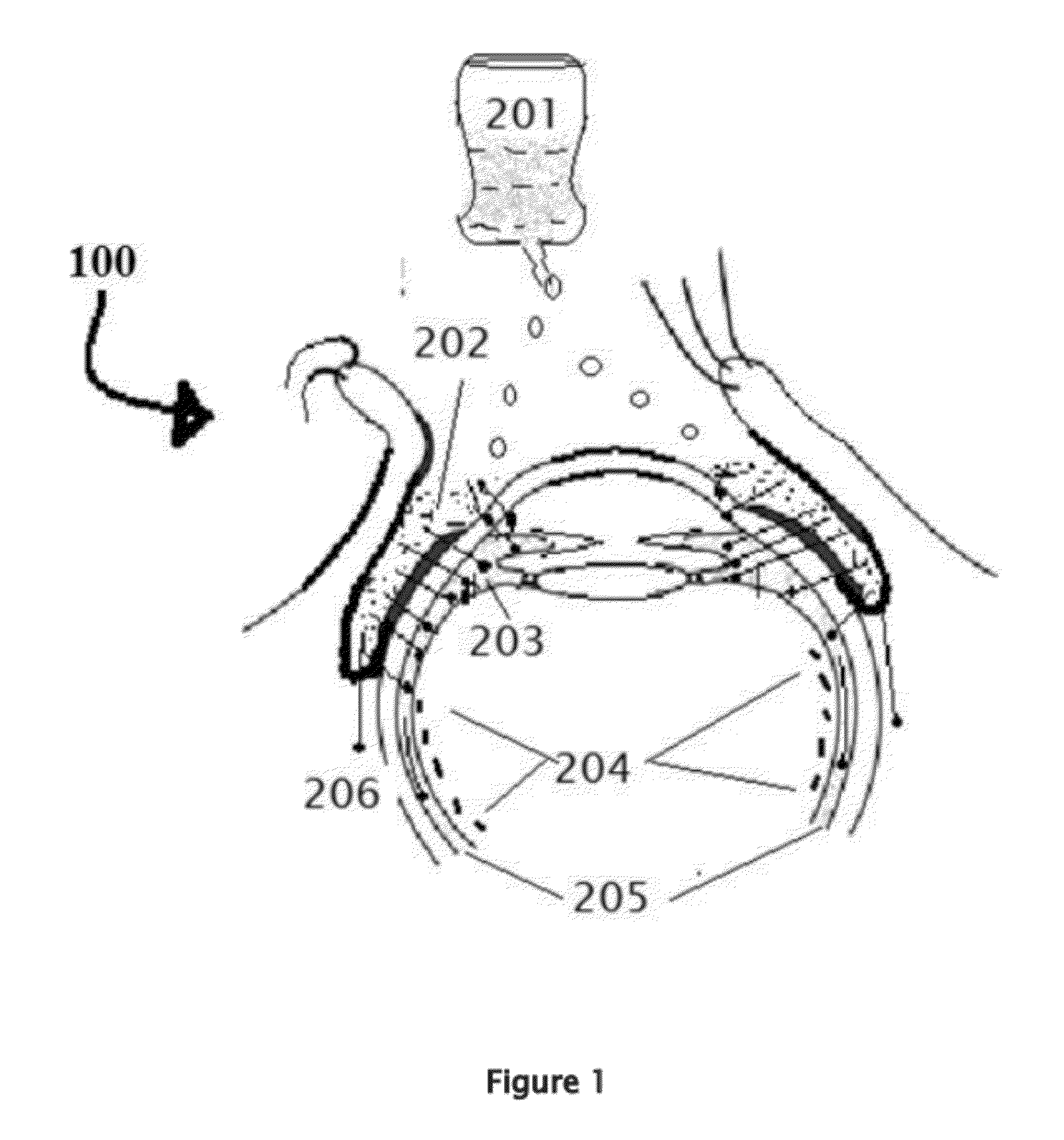Retinitis pigmentosa treatment
a technology of retinitis pigmentosa and pigmentosa, which is applied in the field of retinitis pigmentosa treatment, can solve the problems of retinitis pigmentosa defect, genetic defect of photoreceptors, insufficient knowledge about the causes, and the treatment of rp, and achieve the effect of facilitating the removal of ros and glutama
- Summary
- Abstract
- Description
- Claims
- Application Information
AI Technical Summary
Benefits of technology
Problems solved by technology
Method used
Image
Examples
example 1
[0170]Select the patient and establish the diagnosis of retinitis pigmentosa and the RP etiology which the person is suffering. The complete examination of the eye as described above is important, Record the preliminary examination results on the patient chart. The patient will be examined for any corneal and conjunctival and retinal BV afflictions.
[0171]Position the patient in supine posture or sitting with head extended with support on a recliner. Using a dropper or dropper squeeze bottle containing the insulin, IGF-1, and chlorin e6 formulations are instilled. Deposit two or three drops of insulin, IGF-1, and chlorin e6 preparation in each eye lower lid fornix and / or everted upper eyelid conjunctional sac. Both eyes receive the eye drops. Apply slight pressure at the nasal angle of eye on the nasolacrimal canaliculi-sac-duct system to prevent leaking of the therapeutic agents to the nose to avoid systemic absorption using the method shown in the FIG. 7.
[0172]The patient must rema...
example 2
[0174]Follow the instruction as described in the above EXAMPLE 1. If the men and woman suffer from retinitis pigmentosa with dry eyes syndrome due to estrogen and testosterone deficiency, they need to be treated with estrogen and testosterone ophthalmic along with insulin, IGF-1, and chlorin e6, by oral or parenteral administration. Androgens are trophic factors for various neuronal tissues including retinal photoreceptors. The androgens exert potent anti-inflammatory activity through the production of transforming growth factor beta (TGF-beta), suppressing lymphocytic infiltration, and inflammatory response in the pigment epithelium and the retina and the associated blood vessels. The eye drops containing testosterone can be prepared which the drops used after pretreatment with insulin, IGF-1, and chlorin e6. The ophthalmic drops can be prepared using testosterone (androgen), DHEA—a mild androgen, also.[0175]a. Apply 2-3 drops insulin, IGF-1, and chlorin e6 drop of ophthalmic drops...
example 3
[0180]Follow the instruction as described in the above EXAMPLE 1. Previous investigations demonstrated that bendazac prevents protein denaturation produced by U.V. rays. The bendazac is capable of attenuating the biological effects of sun radiations and the tissue associated with adverse effects of ROS on the retina. This possibility was confirmed by the recent observation that bendazac has a protective effect on photo-oxidative processes linked to free radicals involved in the retinitis pigmentosa. The ophthalmic solution of 1% lysine salt of bendazac can be used with muslin and IGF-1. This invention enhances therapeutic agents to reach the site of pathology in the retina. Lysine salt bendazac at the oral dose of 500 mgs / three times daily for a period of 7 or months can also be used in addtion. Insulin, IGF-1, and chlorin e6 combined with bendazac ophthalmic preparations can be compound to be used simultaniously or coupounded separately and then dispensed separately.[0181]a. Apply ...
PUM
| Property | Measurement | Unit |
|---|---|---|
| distance | aaaaa | aaaaa |
| color | aaaaa | aaaaa |
| photosensitive | aaaaa | aaaaa |
Abstract
Description
Claims
Application Information
 Login to View More
Login to View More - R&D
- Intellectual Property
- Life Sciences
- Materials
- Tech Scout
- Unparalleled Data Quality
- Higher Quality Content
- 60% Fewer Hallucinations
Browse by: Latest US Patents, China's latest patents, Technical Efficacy Thesaurus, Application Domain, Technology Topic, Popular Technical Reports.
© 2025 PatSnap. All rights reserved.Legal|Privacy policy|Modern Slavery Act Transparency Statement|Sitemap|About US| Contact US: help@patsnap.com



